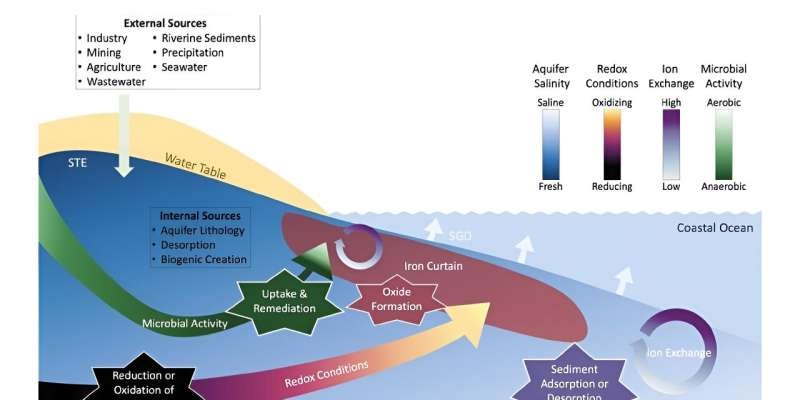A new model reveals an increased metal emission in aquatic ecosystems due to climate change and manmade activitiesThe researchers of the University of Gothenburg have developed a model that shows this tendency for coastal areas. This post dives into some of these myriad consequences, along with what we as a society can do to help combat this rapidly expanding menace.

Buried Threats Resurfacing
A study recently published in Limnology and Oceanography Letters reports a frightening trend: climate change and human activity are breaking the delicate cycle that historically trapped heavy metals in sediments and soils along the coast.
These places were once able to accommodate and sink heavy metals when the surrounding waters polluted them, researchers say. Similarly, rising sea levels, changing precipitation patterns and increased storm activity associated with a changing climate have resulted in these dangerous chemicals being released back into the ocean.
But at the same time, human actions such as urbanisation stemming from population growth as well as poor water treatment and mining that take place on the coast are not helping. When they are dissolved from the sediments and soils, these metals can easily get into marine lifeforms which can cause reproductive problems and behavioral defects.
Hotspots of Concern
The scientists are using a broad model to specify the regions likely to experience the largest increases in metal emissions. Those findings are troubling as well, showing that the tropics, which account for one-third of the worlds coastlines, face a higher risk.
In fact, the model says there are 4% of coasts in the world that fall into the highest-risk category. They are identified by their high population densities, lack of advanced wastewater treatment facilities or even space to build one, combined with the fact that they sit atop acid sulfate soils and have mining operations going on within 10 kilometers from the coast.
It points to the coasts of Southeast Asia as an area where these trends are particularly alarming The region is expected to be one of the most impacted in terms of climate change as can be seen from the five top risks, including rapid population growth and inadequate water purification infrastructure.
The model helps researchers to assess the risks from important sources of metal pollution, and represents a valuable tool for future research and intervention efforts in addressing significant problems of metal contamination in vulnerable coastal environments.
Conclusion
And a new model developed by researchers at the University of Gothenburg suggests that such studies paint an alarming portrait of the future: for coastal areas globally — especially within the tropics — there is an increasing risk both of a release of metals due to climate change and of intensifying metal emissions thanks to human activity. The toxic sludge, that era’s industrial waste, had been buried and capped — usually with homes built on top of it — and now an imbalance in the treatment system is in danger of allowing runoff to flush some of those chemicals into the ocean where they can wreak havoc on marine ecosystems and the communities dependent on them. Knowledge of the scale of this problem and its specific points of interest can aid policymakers and environmental organizations in devising interventions at hotspots to help protect these crucial coastal regions for future generations.
